Bull Mountain has been castrated. What used to be one of the last remaining bastions of technical mountain biking in the state of Georgia has been cut and bled of its virility. What was once a true man’s trail (or a true woman’s trail 😉 ) for those who wished to challenge themselves is now a trail fit only for eunuchs.
Examples
Don’t believe me? See for yourself:
This section of the trail needed some maintenance, so a trail machine was driven straight up through the bottom of the trench, making it even deeper than it was before.
Areas that used to be slightly challenging with a few rocks and ledges to play on are now more like a freeway through the forest instead of a true trail.
As another example, look at what has been done to one of the nicest little rock gardens on the entire trail. The recent trail work has removed any sense of challenge or difficulty. There is now a bulldozed path through the rocks that a beginner on their first mountain bike ride could navigate:

All of the rocks have been moved into two big piles, making it beyond easy to pedal up this short climb:
Sections of trail that used to be delightfully chunky and had not eroded in the slightest are now as smooth as a baby’s bottom:
As my final display, I’d like to present a short climb that is perpetually wet due to a spring right next to the trail. The slow erosion had created a challenging, rocky climb that, while difficult, was not exceptionally tough to clean. Easily over a thousand pounds of rock has been removed from this section:
The Problem
So why do I have my undies in a bundle over this?
Well, if quality reroutes had been built around some of these seriously washed-out trenches, I would have been fine with that. Much of the Bull Mountain trail wasn’t quality singletrack to begin with: it was old mining and logging roads that have naturally reverted back to singletrack. Rerouting the trail onto a quality bench-cut grade would have made sense in places.
Quality rerouting is precisely what has already done with several sections lower down on the same trail and over in the adjacent Jake Mountain area, and those new trails are fabulous! While they are very smooth and easy, they are designed astronomically better than the old trails were–you’ve got to take the bad with the good.
However, on the upper Bull Mountain trail, instead of spending the time and effort required to do quality reroutes, a mini trail dozer was driven straight up the mountain, blasting a freeway through the bottom of already washed-out trenches.
Newsflash: if you don’t do something to fix the underlying problem, your newly bulldozed section is going to wash out eventually too! And when you dig even deeper into the mountainside, erosion is going to be worse than ever before.
The Epidemic
What irks me even more than the bulldozed trenches are the areas where rocks were removed from a perfectly rideable, sustainable trail. None of these sections were what I would even rate as “expert.” They would have been rated as upper-intermediate to advanced at worst.
So what gives? Why were rocks removed from a perfectly good trail–one of the only somewhat challenging trails in Georgia, at that?
This “trail maintenance” is symptomatic of an epidemic that is sweeping the Southeast, and to some extent, the nation as a whole. Bike198 published a great article on the subject, and has referred to this epidemic as “dumbing down the trail.”
In short, today’s riders seem to have a sense of entitlement when they hit the trail. They seem to think, “Hey, it’s a public mountain bike trail. I should be able to ride this and have a good time, no problem.” Some of these people have only been riding mountain bikes for a couple of years, and have been so focused on fitness (or not focused enough, possibly) that they haven’t spent the time to develop any substantial bike-handling skills. When they ride a trail they can’t handle, they complain–and unfortunately, their complaints are often heard, and trails like Bull Mountain potentially get dumbed down.
Here’s the thing: not every person should be able to ride every trail. If every trail was a smooth, featureless path through the woods, we mountain bikers would become little more than road bikers with better scenery!
There should be trails out there that are challenging, difficult, and yes, dangerous. Sure, they should be built sustainably, too: but difficult trails can be very sustainable. And I’m not arguing that every trail should be insanely difficult: I’m arguing that we should have a good variety of trails, and from where I’m sitting it looks like we are most sorely lacking in difficult trails.
It isn’t the responsibility of the land managers to protect riders by making sure that trails are so vanilla that the chance of injury is virtually nonexistent. It is the responsibility of the riders to be honest about what their skill level is, and to be smart enough to get off of their bike and walk when they are in over their heads.
Mountain biking is about challenge. It’s about pain. It’s about getting outside of your comfort zone and seeing what you are truly made of. While other subcultures may be attacking personal responsibility, we are one of the few groups of people that should be upholding it as a fundamental fact of life.
So if you don’t want to challenge yourself, bust open a bag of potato chips, grab the remote, and hold down the sofa all weekend. If you do want a challenge, then do your part to stop the spread of sterilized singletrack!
Your Turn: Please voice your thoughts and opinions on sterilized singletrack in the comments section below.





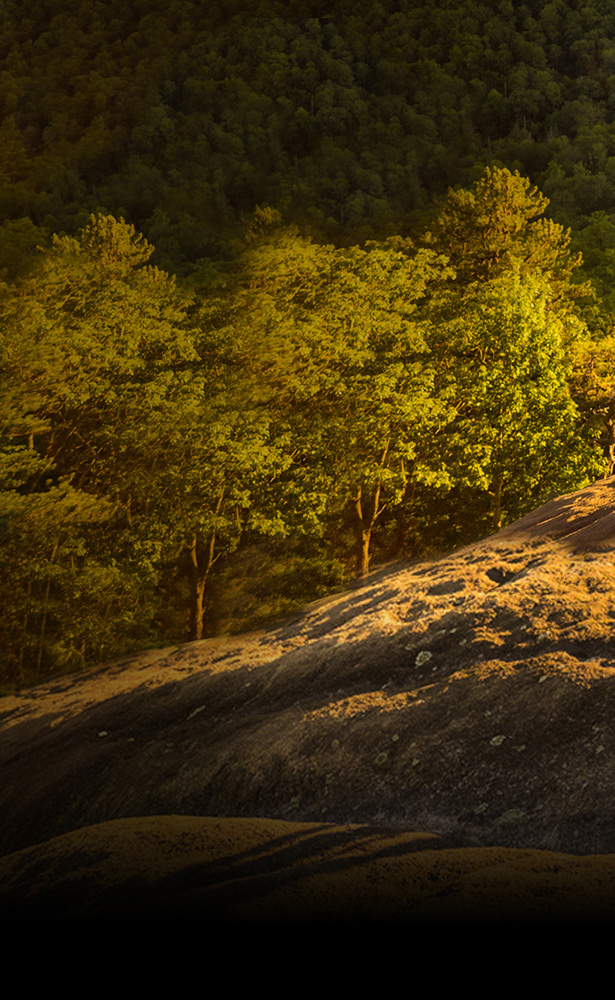
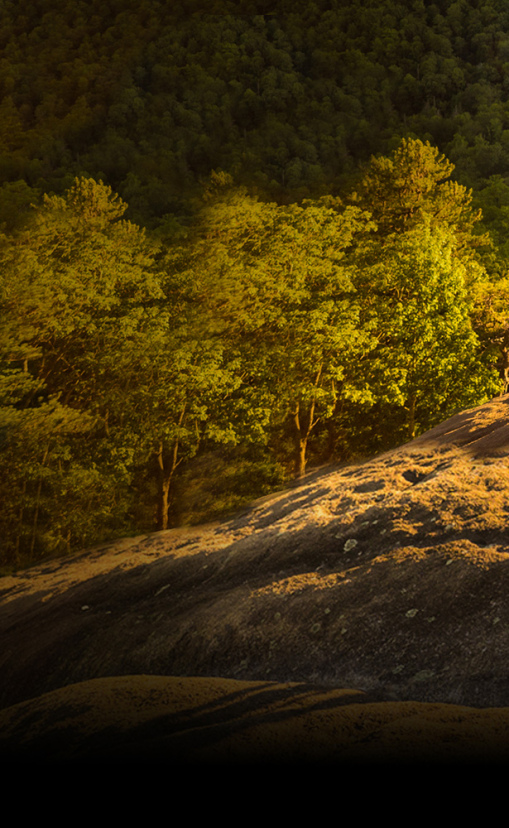
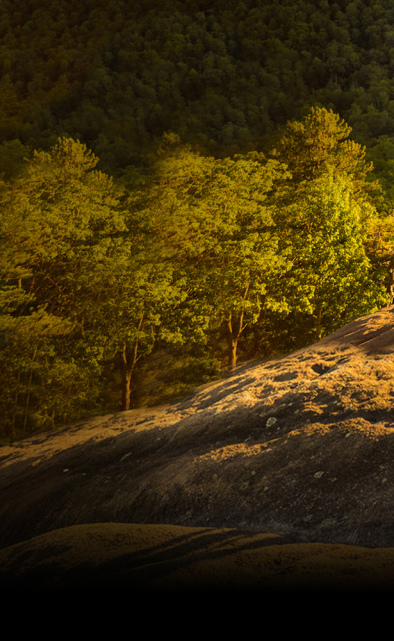
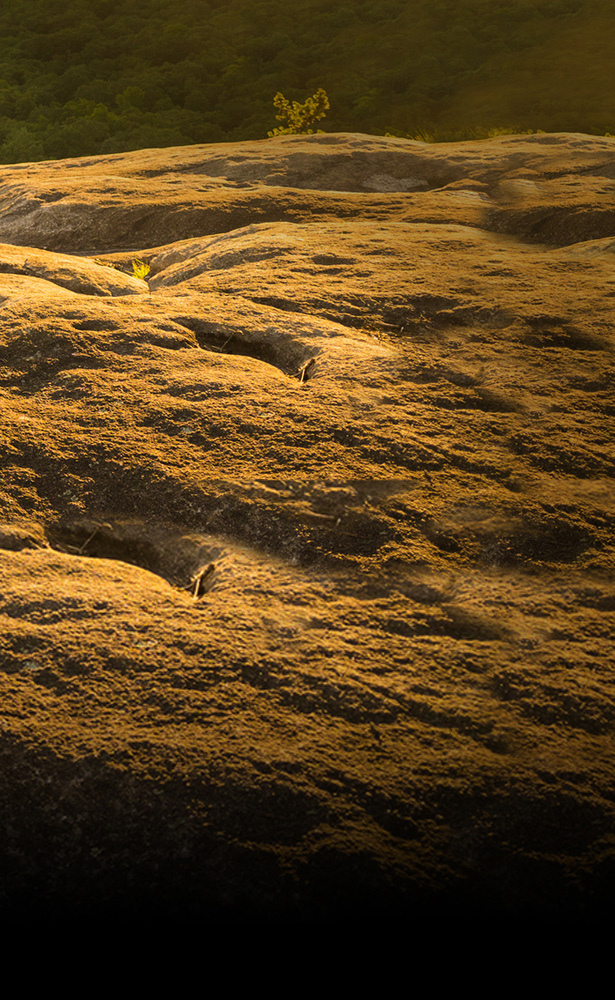

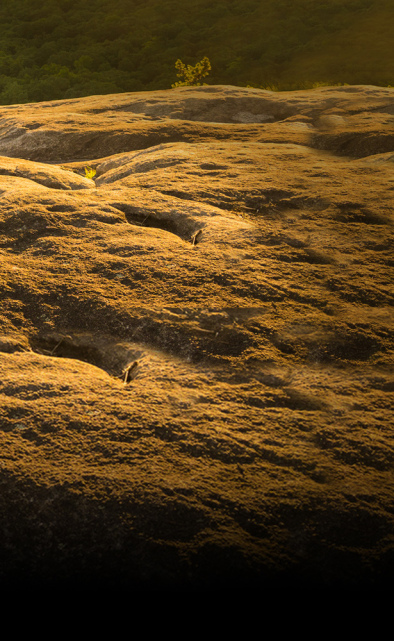






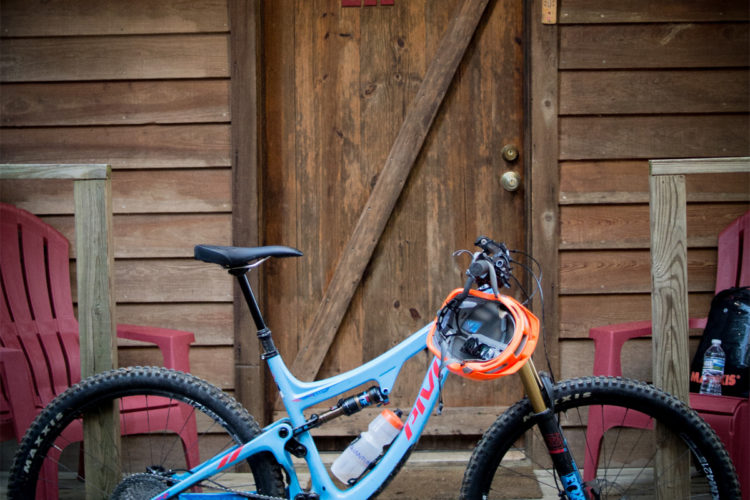

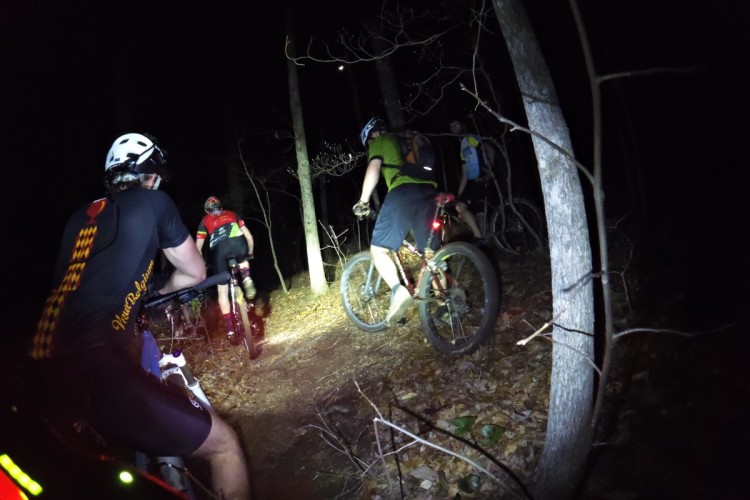

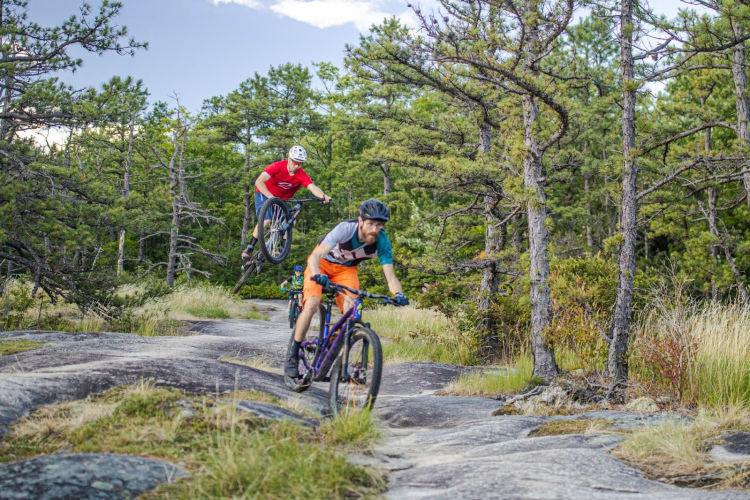



38 Comments
Feb 21, 2012
After reading the SORBA forum thread ckdake shared it's obvious the work at Bull Mountain was done for sustainability reasons rather than to make the trail easier. Still, an interesting discussion...
Feb 21, 2012
@element22, exactly. This "trail maintenance" isn't going to help much in the end.
@dgaddis, exactly. However, as far as I'm aware, the volunteers involved in this area weren't consulted when the changes were made.
@ckdake, Yeah totally a tricky issue. Dave Muse's response was very enlightening (great guy, has his head on straight). However, I wonder if he's even referencing this trail work up on Bull. Like I said in the original article, if some of these sections had been rerouted like the trails lower down, I would have understood that.
However, as element22 and dgaddis have both pointed out, these are horrible examples of sustainable trail work. Much of the work they have done doesn't improve the sustainability at all, and some of the work has no impact on sustainability either way. In the second to last picture, that is a section that has suffered no ill environmental effects, and was delightfully rocky and just a pleasure to ride. The only maintenance that was done to the section just removed the rocks, dumbing down the trail and making it "as smooth as a baby's bottom."
Like element22 mentioned, rocks are natural armoring. They help hold the trail in place, help prevent the dirt from getting washed away. Removing rocks accelerates erosion in most circumstances.
@schwim, That's probably part of it. But trails around the nation are getting changed because they are too difficult, and the majority of new trails being built, especially here in the Southeast, are incredibly groomed, catering to the beginner and intermediate rider because many people don't want to get out of their comfort zones and challenge themselves on tough trails.
@schell21, Great point! I love that Big Creek has embraced the rock and has embraced all types of riding. I think Big Creek is a great example of a trail-system-done-right. I wish they had more trails there, but there just isn't room.
But like you said, Big Creek has tons of rock, some advanced riding, but they ALSO have some beginner trails and a pump track that is accessible to beginners. Great variety.
@joetutt, Amen.
@Jared13, great points. And I agree with you: when the trail is built unsustainably, then doing something to fix it is necessary. But as I've argued above (and I think you agree), most of this "maintenance" doesn't actually address any of the environmental issues!
@maddslacker, Amen! I love that there are a few places that seem mostly immune to the issue. Dakota Ridge is a beast of a trail, and I love it.
I hear you on the variety: that's exactly what I'm advocating. Like you said, removing the difficult trails removes half of the equation.
Feb 21, 2012
Feb 28, 2012
The thing is, machines really do get the trail built SOO much faster than you can do it by hand. Building trail by hand is hard work... but it's rewarding!
@skibum, great insights! Thanks for sharing.
Feb 22, 2012
Just another example of the payback you can get when you get in tight with land agencies. Around here there are lots of bikers who spend lots of time with the parks people making sure they understand what bikers like or don't like and we coddle and cajole them into keeping us in mind when there is talk about changing existing trails or creating new trails. I can't say that we are successful all the time but I know that it is a lot better than it would be if we weren't engaging those people on a consistent basis. Bottom line: Get involved in the process. That is a lot more effective then whining about it after the fact.
Feb 21, 2012
Feb 21, 2012
When building a new technical feature on our trial, we make sure to build a clear, less technical go-around. Or, if we build jumps, we usually build tables instead of gaps so they can be rolled.
Apr 29, 2017
Anyway, we are on the dirt everyday trying to make awesome happen, and we sure dont mind if you stop by and give input. Currently on Green Mtn, Denver area. Thanks yall!
Andrew M.
-Tango Trailworks
and Tony Boone Trails.
Feb 21, 2012
A couple of trails here have had the fun "fixed" out of them, but for the most part technical trails stay as they are. (Think Dakota Ridge and Deer Creek) Recent trailbuilding work at the otherwise mostly tame Buffalo Creek system actually added some black diamond level trail.
1) I agree that work should be done to mitigate erosion, BUT that does not mean turning it into something a cyclocross bike can handle. In fact, I would think that some well placed obstacles would serve the dual purpose of preventing erosion and making the trail more challenging.
2) I also don't mind a mix of technical and more tame trails. Some days I like to roll over the gnarly stuff, other days I like to spin and daydream while watching the scenery .. it just depends on my mood. But to take away all the gnar ruins 1/2 of that equation. :D
Feb 21, 2012
Feb 22, 2012
In my own backyard, I have seen this phenomenon in what is still probably one of the most technical trails in the US: Santos. Recently earning a Bronze IMBA medallion, the OMBA does a fantastic job at maintaining the trails, with one very notable exception: over the past year I have noticed subtle changes that make this tech-lovers delight easier and easier.
At first I thought I was just getting better...well, I was, but I have filmed a lot of the trails such as the John Brown and Anthill sections with my GoPro camera so that I can use them on the trainer when I am deployed. There are several places on both of these 'red' level trails where large obstacles were removed or smoothed over and it is undeniably disappointing. For example, there once was a large rock at the end of the Anthill section that required a lot of finesse and poise to negotiate. It took my friends and I several trips and attempts, but we finally mastered it, and now is has disappeared as if Gandalf himself obliterated it with rock dissolving incantation.
What is sad is that there are yellow trails which are easy, blue trails which are intermediate (but are really more serpentine yellow trails), and the red trails...which are several steps (thankfully) above the others. I don't understand why the blue trails can't be harder and leave the red ones alone.
A similar trend is occurring at both Alafia and Boyette, though I will say that the admirable SWAMP club has offset this by building more trails, and many of them are heavenly.
We are lucky that we have trails at all, but we are unlucky in that many of them take for granted. These trails do not neuter themselves. Quite the opposite, when left to the forces of entropy, nature will make them more technical and un-ridable. The only solution I see is for all of us to take a very active part in trail maintenance and building...and if that doesn't work, start throwing a few rocks on the trail every time you go. Eventually, you'll have your own little garden o'stones.
Feb 28, 2012
It's too long to post directly here, but in and amongst the rest of this blog post, extensive, though possibly somewhat amateur analysis can be found...
http://davidleemuse.blogspot.com/2012/02/bull-mountain.html
Feb 23, 2012
Feb 21, 2012
Feb 22, 2012
Oct 21, 2013
I was talking with the CAMBA folks in Wisconsin and someone asked me what the trails were like in other parts of the US. I thought about it for a minute and said, "actually, a lot of them are like the trails here." Of course the topography and flora changes depending on where you are but the trails being built today are becoming quite standardized.
Standardization is a good thing in terms of sharing best practices but it also leads to homogenous trail systems that start to bore riders after a dozen miles or so. I think the trend toward standardizing mountain bike trails deserves its own article...
Feb 28, 2012
While doing this, some interesting things have happened. In one case, a bunch of hikers just took it upon themselves to install railroad tie steps at the bottom of a favorite technical descent. There was no trail sustainability issue there, they just thought it would be better. We seem to have been able to convince the various management agencies that simply allowing any group to go do whatever they want is not the way to go (they are always happy to get any volunteer work in the current time of declining budgets for things like this). So, while many are good-intentioned, they still need to be intercepted to prevent the travesty that is now the bottom of the Section 16/Intemann trail. Ironically, the equestrians were even more upset about the railroad ties than the bikers--it seems going down stairs is not a good thing for horses. Another good reason to not alienate other user groups--you never know when you'll have something in common and need their help! I don't know if MTBs alone could have had this impact.
The most satisfying thing is being able to affect the exact path of a new trail, reroute, or simply save an existing route when it rocks as is. When you're out in the woods and see a feature that you can incorporate rather than avoid, and get others to buy off on it as well, that's a good day's work! I definitely agree with rmoon; I love natural features but really don't care for man made ones. For me, the man-made ones are best applied where they are necessary (skinnies to cross boggy areas) or where no natural features exist. Fortunately, I live in a semi arid environment with plenty of natural gnarlyness.
Feb 21, 2012
I would agree that ride-arounds/trail rerouting are almost always the answer. It takes more work (both muscle and brain) to put the ride-arounds/reroutes in but I think it makes the trails so much better.
Expert trails should stay expert, intermediate should stay intermediate, etc etc.
We did some 'dumbing down' at my local trail. There was a root that crossed the trail at about a 50 degree angle. As riders hit it, it pushed them to the outside of the trail and was wearing away the benchcut.
We took out the root, smoothed out the ruts, and opened the trail up a bit where the root was.
Is it easier to ride? Yes.
Is it faster to ride? Yes.
Is this section of the trail now sustainable? Without a doubt.
Had the removal of the root done nothing for sustainability, we wouldn't have done it.
One thing I dislike about 'dumbing down' a trail even when it is for sustainability is you are taking that challenge away from someone. Finally clearing that one obstacle that was kicking your butt is an AWESOME feeling. However, if it's for the betterment of the trail, i.e. sustainability, and not for the betterment of the rider, i.e. clearability (it's a word) then I see it as a good thing.
Feb 22, 2012
I think a good alternative to dumbing down trail systems is more signage warning riders of what they are getting into and stating rules telling new riders to not make their own reroutes and get off their bike and walk over the obstacle if they cannot ride it.
Whenever I ride in Southern VA (Richmond and Williamsburg mainly) their trails have such good signage that you never know if you are biting off more than you can chew before entering each loop. This should be in place at all high traffic mtb trails. And yes, I understand it costs money…but so does renting the equipment or paying a contractor to turn that awesome rock infested downhill into a boring gulley.
/rant 8)
Feb 21, 2012
Jared said it best- Yeah there are parts of the trail that sometimes wins the battle- and then sometimes you win the battle. That's what makes it awesome and fun to ride IMHO.I know when I get close to those tricky sections that the fun is going to start- and I love that. The feeling that I might not make it but I'm going at it full steam anyways. Even if I have to ride it all the way to the ground !!!!!
Feb 21, 2012
All you guys can do now is go back and build in some technical sections, with the belssing of the trail manager, whoever that might be.
Did they leave all those removed rocks accessible? Or could new trails slowly be added to provide some more technical sections?
Hope it works out for you locals.
Cheers
Barry
Feb 28, 2012
So you didn't descend back down Bull Proper?
One of the issues that I foresee with this trail work is that people will be coming down off the mountain with so much speed that they fail to slow down and navigate through the new "meanderings" in the old trail tread. Some of the new work could really harsh the flow, or people will end up blasting over it unknowingly.
Ah well, time will tell.
I loved this paragraph, I think this is key:
"What we really need are trails that are technical but ALSO sustainable as opposed to trails that are technical because of their unsustainability. Currently, the only reasonable way that I know of to do that is to find naturally technical terrain and run the trail through it a la The Dug Gap Pinhoti. I would argue though, that that's the "right" way to do it. I'd like to see trails that aren't much more than a representation of the surrounding terrain that's negotiable by whatever mode of transport it's designed for. I wouldn't expect the trail to be chunky and technical if the terrain around it isn't. Similarly, I wouldn't expect to find a clean and easy trail through rough and rocky terrain. In the long term, I suspect that the solution will be to have more trails in better locations, and if we want technical trails, build them in naturally technical locations. It will take time but we'll get there eventually if, as a community, we do the right things. I'm certain though, that we won't get there if we don't first make what we already have sustainable and demonstrate that we can manage it."
Feb 22, 2012
Yes, there are some issues up there on bull mountain. But the main point of the photos and the commentary on the current changes was to segway into a discussion about the broader issues at hand. Thanks everyone for weighing in on the topic.
@delphinide, thanks for the thoughtful response! This really is a wide-spread epidemic.
Feb 24, 2012
Feb 21, 2012
One thing that might be driving the rock removal and other smoothing is the trail classification. In the NF, trails are classified with numbers 1-5 and I think Bull proper is supposed to be a 3, which means when it was first surveyed, it was a 3. 5 is basically paved. 1 is like the Pinhoti up on Dug Gap mountain. I don't know all of the details in between, but the contractors do. Reclassifying a trail is a big deal. The contractors may have been tasked with restoring it to level 3. I'll find out though.
The big cut in that first photo wasn't executed well. It should at very least be outsloped with a channel on one side with rock in it and a nick at the bottom. Looks like something we'll have to fix. Ditto for the second photo. It will be a lot of work.
The work in the third photo at least makes sense. Water won't follow the meandering trail, but will instead make its way into those rocks and slow down. That's the photo that makes me think that they were attempting to restore the trail to a level 3 classification. Fully exposed rock would have done the same job re. erosion, but if the intended line was through the rocks, then it probably wouldn't qualify as level 3.
Same deal with the rock removal in the next photo, though they couldn't meander the trail there because of the spring on the upslope.
Bull was once an old timber extraction route and the roadbed had rolling dips up by the intersection with Lance Creek Road (babyheads). The majority of the work that was slated to be done up there was restoration of some of those dips. Anybody notice how successful that was?
Feb 21, 2012
Feb 21, 2012
In the examples above, it seems odd that rocks would be removed to prevent erosion. I'm no trail building or maintenance expert but it seems like rocks are less likely to erode than exposed, red Georgia clay.
In suburban areas there's a better argument for making trails easier; after all, local governments can't stomach the idea of injuries or lawsuits and these trails are more accessible to younger and less experienced riders. But for remote trails on National Forest land like Bull Mountain, I say keep things as natural (and potentially challenging) as possible.
Several years back I complained online about a local trail near my house in Durham, NC that had several fallen trees blocking the trail. I thought the logs were too high off the ground and harshed the flow but others disagreed and said they liked them for the challenge. So I guess my question is, how far can you go in the opposite direction (in terms of not doing maintenance) before a trail is too challenging? Should there be a 10% rule or something (as in, 10% of riders should be able to clear it)?
Feb 21, 2012
http://www.sorba.org/forum/viewtopic.php?f=13&t=38456
It sounds like something had to be done and while I'm as frustrated as anyone else about some things that were taken away from Bull Mountain, there is still plenty of epic riding to do up there.
Jul 18, 2014
Like someone said earlier, if you aren't there, you don't get to have an opinion.
Feb 21, 2012
Hate to tell you guys, but those of us that like technical trails are the minority. Most folks don’t want to hop logs, or pick their way through a rock garden. In my local area our two easiest trails (FATS and Bartram) are by far the most popular. Our most technical trails (which aren’t that technical at all in the grand scheme of things) are the least popular. FATS might see 100+ riders on a nice Saturday, but Mistletoe or Modoc will only see a handful, if that.
Here’s what it really boils down to: if you want your voice to be heard, to get your way, do something. Not just complain about it, but show up at work parties, talk with the people in charge of maintenance, get involved. We have a saying about which logs to leave on the trail and which to cut off, and it applies to everything really: the rule of the saw applies. And he who has the saw, makes the rules. It seems like the people most willing to get involved and do work are the ones who don’t want the challenging features.
(not calling you out greg, I know you’re a worker)
Feb 28, 2012
I see a lot more man made obticales on trails like skinnies on logs and board walks. This stuff just dosesn't seem real to me. Real or Fake, it is all in our heads but I prefer real.
Feb 22, 2012
Apr 26, 2012
Feb 22, 2012
"Per the USFS, there were three options at Bull/Jake: do nothing, do the work that was done or close the trails to all traffic, permanently. They have standards for the amount of degredataion that can occur on an inventoried trail over a period of time and for the level of impact that it can have on the environment and the Bull/Jake trails had never been compliant with either, so option number 1 wasn't feasable. That just left close them or rehab them and I'm glad they chose the latter."
this was from the second post and was only part of it.
http://www.sorba.org/forum/viewtopic.php?f=13&t=38456
Oct 22, 2013
Feb 21, 2012
Feb 21, 2012
Feb 21, 2012